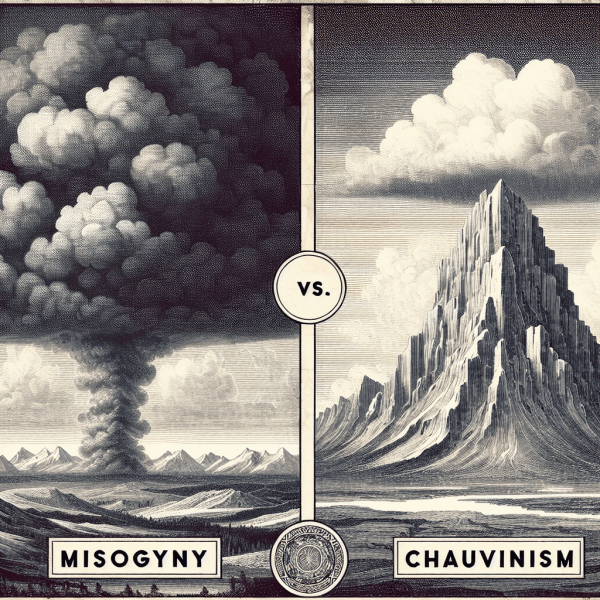Introduction
The distinction between the terms 'misogyny' and 'chauvinism' lies both in their definitions and the nuances they carry in societal and cultural contexts. While both words can denote negative attitudes toward women and femininity, they emerge from different historical contexts and carry different connotations. This essay aims to dissect each term, exploring their meanings, uses, and implications.
Defining Misogyny
Misogyny is a term derived from the Greek words 'misos' meaning hatred and 'gyne' meaning woman. It refers to an entrenched prejudice against women, often manifested in hatred, dislike, or mistrust. This term encapsulates a broad range of negative behaviors and attitudes that can manifest in various forms, from overt violence and discrimination to subtler forms like jokes, stereotypes, and societal norms that devalue women.
For example, the phrase 'His misogyny was evident in the way he spoke about women as if they were inferior.' illustrates a clear attitude of disdain and bias against women. Misogyny can be both individual and institutional; encompassing everything from personal beliefs to systemic discrimination in laws and policies.

Defining Chauvinism
Chauvinism originates from the name Nicolas Chauvin, a flag-waving soldier known for his excessive nationalism in 19th-century France. The term has since evolved to mean an unreasonable or aggressive belief in the superiority of one's group, often aligned with strong nationalism or patriotism. In contemporary usage, 'male chauvinism' specifically refers to the belief that men are superior to women, often displaying attitudes of patronization and entitlement.
For instance, when someone states, 'His male chauvinism shone through when he insisted that only men could be good leaders.' it implies a belief that men are innately more capable or deserving of leadership roles than women. Unlike misogyny, which denotes deep-seated hatred or dislike, chauvinism can sometimes come off as a more patronizing or condescending attitude, often rooted in misguided or outdated notions of gender roles.
Comparative Analysis
While both misogyny and chauvinism share a common thread of gender-based bias, their implications and applications are markedly different. Misogyny can be seen as a stronger and more harmful concept; it is rooted in a profound disdain for women whereas chauvinism often exhibits an overly protective yet dismissive attitude towards them.
Moreover, misogyny encompasses a wide range of negative expressions against women, ranging from systemic oppression to personal animosity. In contrast, chauvinism primarily critiques a narrow band of attitudes that assert male superiority, usually in a more societal context.
Conclusion
In the sociolinguistic landscape, understanding the distinctions between 'misogyny' and 'chauvinism' is crucial for discussions on gender inequalities and societal attitudes towards women. Misogyny represents a broader, more hostile system of beliefs that dehumanizes women, while chauvinism often denotes a misguided reverence that still places women in an inferior societal role. Recognizing and differentiating these terms allows for a richer understanding of the complex dynamics of gender relations in contemporary society.








Have a discussion about this article with the community:
Report Comment
We're doing our best to make sure our content is useful, accurate and safe.
If by any chance you spot an inappropriate comment while navigating through our website please use this form to let us know, and we'll take care of it shortly.
Attachment
You need to be logged in to favorite.
Log In